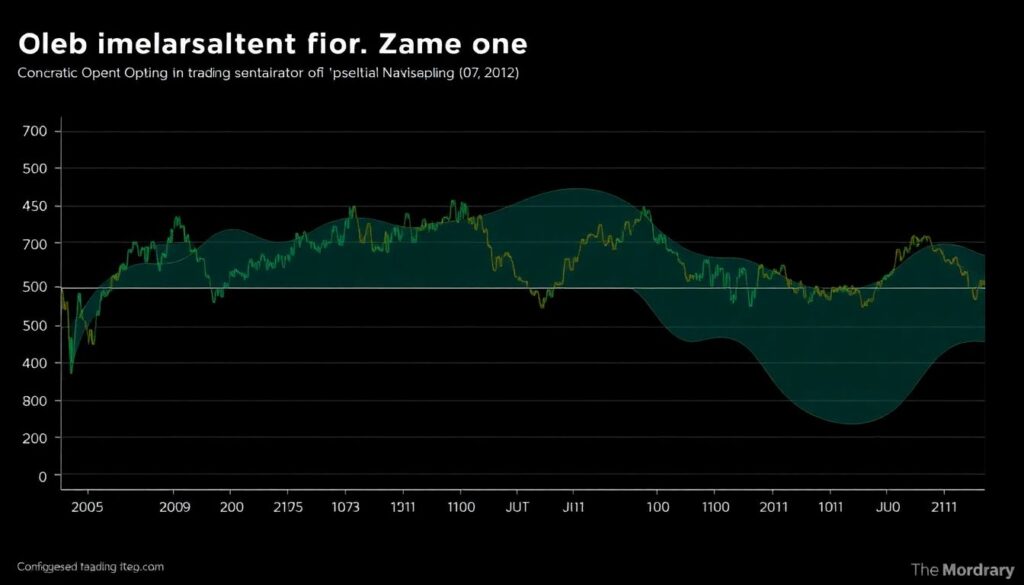Understanding OI Congestion Zones: Identifying Critical Pockets in Options Trading
Conceptual Overview of OI Congestion Zones

Open Interest (OI) serves as a foundational metric in options trading, reflecting the total number of outstanding option contracts yet to be settled. OI congestion zones emerge when a significant concentration of open interest accumulates around specific strike prices. These zones often indicate areas of strong market consensus or contention, acting as potential support or resistance levels.
The process to identify critical pockets in OI involves analyzing where spikes in open interest overlap with high volume and price stagnation. These intersections often signal market indecision and can precede breakouts or reversals. In the context of OI congestion zones trading, these pockets are crucial for anticipating volatility and directional bias.
Comparative Analysis of Detection Approaches

Several methodologies exist for identifying OI zones in the stock market:
– Static Analysis: Traders map OI levels at fixed intervals (e.g., daily close) and monitor for clustering at specific strikes. While straightforward, this approach lacks responsiveness to intraday dynamics.
– Dynamic Heatmaps: Real-time visualization tools show OI changes across strikes and expiries, enabling detection of evolving congestion zones.
– Quantitative Models: Algorithmic systems integrate OI, volume, and price action to calculate probability-weighted congestion zones.
The dynamic heatmap method has gained traction among institutional desks due to its adaptability, especially when combined with implied volatility skews. On the other hand, static analysis remains popular among retail traders for its simplicity.
Advantages and Limitations of OI-Based Techniques
OI congestion zones offer unique insights, but they are not without constraints.
Benefits:
– Enhance precision in trading strategies OI zones, especially in range-bound markets.
– Allow traders to anticipate gamma squeezes and pinning behavior near expiry.
– Serve as a non-price-based confirmation tool for technical setups.
Drawbacks:
– Lagging nature: OI updates are not instantaneous, potentially delaying signal accuracy.
– Noise from hedging activities may distort genuine speculative interest.
– Requires context from other indicators (e.g., skew, delta exposure) for reliability.
Practical Case Study: Tesla (TSLA) Weekly Options
In Q3 2023, TSLA exhibited a textbook example of critical pockets in options trading. OI analysis revealed a sharp accumulation at the $250 strike across weekly expirations. Despite price oscillating between $245 and $255, the OI at $250 remained dominant, suggesting market makers were hedging significant exposure.
As expiration approached, TSLA’s price gravitated toward $250—demonstrating “max pain” theory in action. Traders who recognized this OI congestion zone executed iron condors and short straddles, capitalizing on the price pinning effect. This case illustrates how identifying critical pockets in OI can directly inform risk-defined strategies.
Recommendations for Traders and Analysts
To effectively utilize OI congestion zones trading strategies, consider the following best practices:
– Integrate Data Streams: Combine OI data with real-time volume, delta, and implied volatility metrics to validate congestion zones.
– Time Sensitivity: Focus on weekly expirations where gamma exposure is more pronounced, increasing the likelihood of pinning behavior.
– Avoid Overreliance: Use OI zones stock market insights as a complementary signal alongside technical and macroeconomic analysis.
Trends and Innovations in 2025
The landscape of options analytics continues to evolve. In 2025, several trends are shaping how traders identify and apply OI congestion zones:
– AI-Driven Pattern Recognition: Machine learning models are improving the detection of non-linear congestion zones, especially in high-frequency environments.
– Cross-Asset OI Correlation: Traders now examine OI zones across ETFs and their underlying components to identify systemic risk pockets.
– Increased Retail Access: Platforms like ThinkOrSwim and OptionStrat have democratized access to advanced OI visualization, narrowing the edge gap between institutional and retail participants.
Another emerging phenomenon is the use of OI zones in synthetic instruments such as zero-day options (0DTE), where congestion pockets can form and resolve within hours. This has led to a surge in short-term volatility strategies based on OI behavior.
Conclusion

OI congestion zones are more than just clusters of open contracts—they are behavioral indicators that reflect collective trader sentiment, risk positioning, and market maker hedging. By learning to identify critical pockets in OI, traders can enhance their timing, improve strategy selection, and manage risk more effectively.
As tools and datasets become more sophisticated, the edge in understanding OI zones stock market dynamics will increasingly belong to those who combine quantitative rigor with contextual market awareness.

